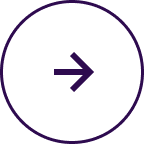Axero intranet is built for building real impact
Discover how businesses around the world are using Axero to improve the way they work.
How Axero is powering workplace success
x
Increase in engagement
%
Fewer emails
240
Minutes saved weekly
%
Increase in knowledge sharing





Our inspired client stories
How Wisconsin School of Business drove 88% intranet adoption with Axero
See how the Wisconsin School of Business achieved 88% employee adoption and significantly cut internal emails using Axero’s modern intranet…
Read moreHow a leading regional credit union boosted productivity to 9/10 with Axero
Learn how a $2B regional credit union achieved a 9/10 productivity score and daily employee adoption by centralizing internal comms…
Read moreHow Movement Mortgage cut email by 75% and united 4,000 employees with Axero
How Axero connected 4,000 employees, streamlined onboarding, and reduced information overload at Movement Mortgage.
Read moreFrom disconnected to award-winning: How Ohio Valley Bank transformed culture with axero
Learn how Ohio Valley Bank moved away from paper and email to a centralized intranet, winning a 'Great Place to…
Read moreHow POET achieved 85% employee engagement by centralizing communication with Axero
Discover how POET achieved 85% employee engagement and cut email traffic by 70% by centralizing communication with Axero's intranet software.
Read moreHow Coro boosted sales performance by 40% with Axero
Learn how cybersecurity company Coro used Axero's intranet to centralize knowledge, streamline global onboarding, and achieve a 40% boost in…
Read moreHow Beginnings Credit Union’s intranet got an 85% adoption rate in 6 months
Struggling with fragmented communication across 8 branches, BCU turned to Axero. Learn how they eliminated silos and achieved 85% intranet…
Read moreHow ASBTDC went from scattered files to cohesive collaboration
See how the Arkansas Small Business and Technology Development Center used Axero to end internal knowledge management chaos, centralize policies,…
Read moreA three-time choice: Why Mostly Human’s EVP selected Axero to replace SharePoint
Discover how Mostly Human replaced SharePoint with Axero to centralize knowledge and achieve a 9/10 engagement score.
Read more
Don’t just take our word for it!
Hear what our happy customers have to say.

“With Axero, we host the TEDx community from around the world under one social platform. Axero’s customer service is the best. We always have someone to answer our questions.”

Sina Sima
Technical Program Manager, TEDx
“The biggest difference is the ease of use for content contributors. People are creating blogs, wikis, and events without any training. It fosters a culture of accountability and content ownership.”

Neeraj Kumar
Vice President of IT and CIO, Roosevelt University
“We’re very happy with Axero. The functionality gives us so much more than we could have asked for. Employee communication and the ticketing system has been key. A huge benefit for us.”

Michelle Mazurkewich
Chief Innovation Officer, Fusion Credit Union










 info@axerosolutions.com
info@axerosolutions.com 1-855-AXERO-55
1-855-AXERO-55


